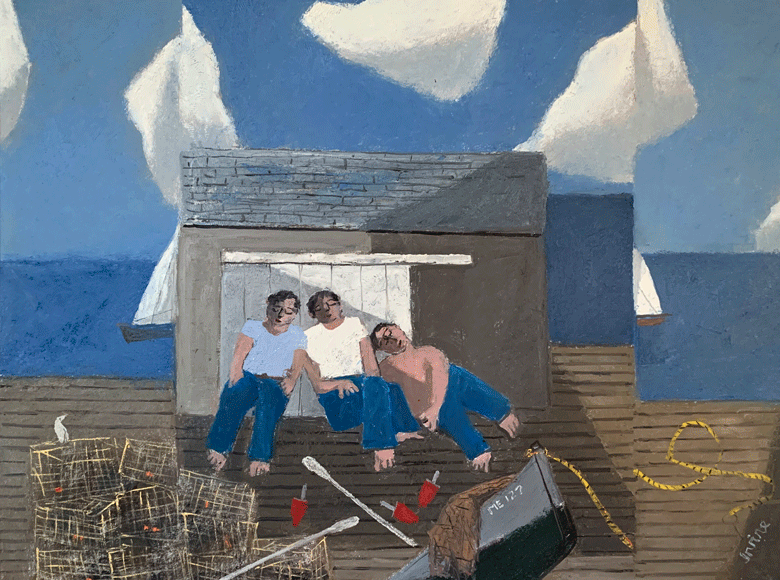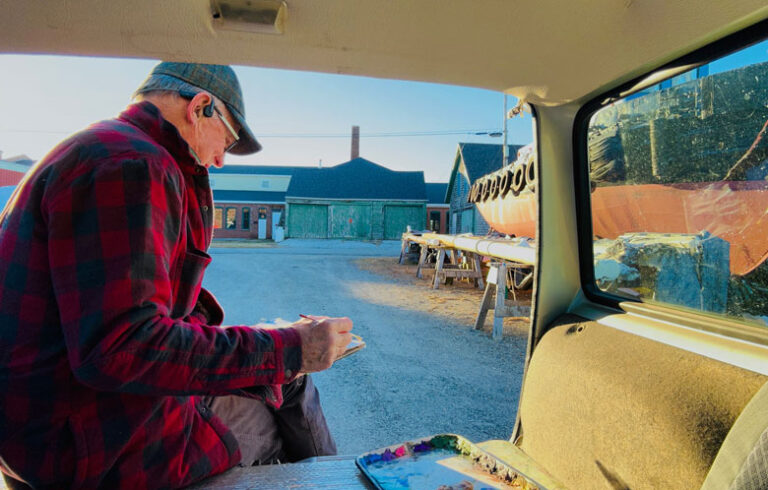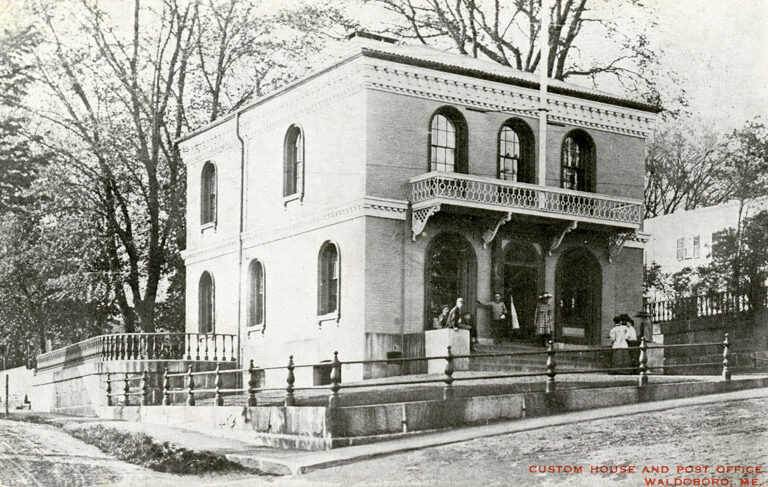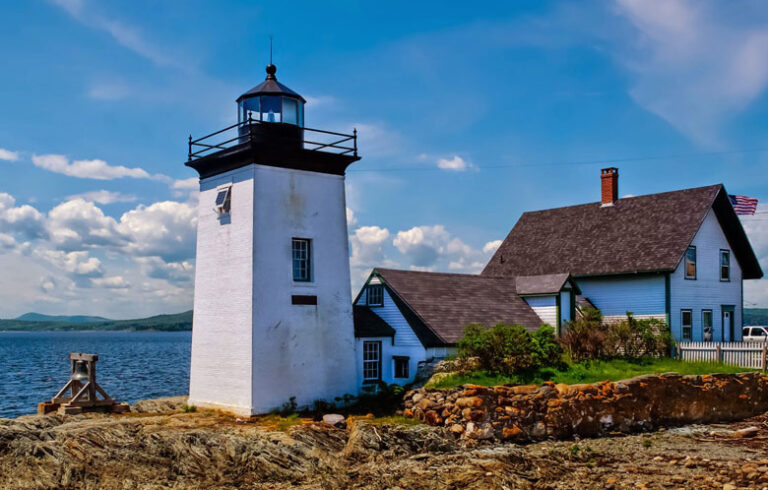“Although the painting is called ‘The Resting Fishermen,’” painter William Irvine explains via email, “they are actually asleep.” A trio of barefoot simply-clad men, eyes closed, lean against each other, their backs against a small shed set on a dock strewn with lobster traps, buoys, oars, nets, and rope, with the bow of a boat marked “ME 127” poking up from the bottom.
Irvine’s objective in creating this image? To express, he writes, “that dreamlike sense of harmony and peace—the three fishermen, their ease with each other, their close camaraderie, in the beauty of their working world.” Mission tenderly accomplished.
Irvine has painted several images of sleeping fishermen over the years. He traces his penchant for the subject to “Sleeping Fisherman, Ploaré, Brittany,” 1930, by British artist Christopher Wood (1901-1930). Wood’s painting shows a fisherman on a beach stretched out asleep beside a basket of mackerel. Irvine first saw the painting as a teenager in Troon, his childhood seaside home in Ayrshire in southwest Scotland, and has carried the benevolent image with him all his life.
His painting carries us to a humble waterfront where three men dream of waves and deep fish-filled water.
Irvine’s love of harbors came from growing up in a coastal town. Although Troon didn’t have a fishing industry, he notes, it boasted a working harbor where boats were built and where his father worked as a ship’s carpenter. The painter’s connection to the water was further strengthened by long walks by the sea.
When Irvine first arrived in Washington County in the late 1960s, he “naturally gravitated” to the fishing villages, most notably, Corea and Jonesport. The landscape reminded him of his home, including the islands of his youth. One in particular, Holy Isle in the Firth of Clyde, “a dark mysterious hump, a presence,” was similar to those he found in Maine.
Asked about the setting of “The Resting Fishermen,” Irvine responds that the easy answer would be his imagination, but in truth it was inspired by early sketching excursions to Stonington. He recalls a wharf that featured a group of “large brown buildings with a tall factory chimney” that obscured a small dock with a gray shed with a white sliding door. “That place with its colorful lobster gear, the gulls, the sound of outboards made a lasting impression on me,” he writes.
As novelist Richard Russo humorously recounted in his foreword to the monograph William Irvine: A Painter’s Journey (2014), the painter does not like the adjective “whimsical” applied to his paintings. While some of Irvine’s paintings have a playful quality, they are more in line with, say, Henri Rousseau’s “Sleeping Gypsy” or some of Marc Chagall’s reveries.
Irvine brings a modernist sensibility to “The Resting Fishermen” by shifting the picture plane so that the horizon, clouds, and the dock itself do not line up. “By doing this,” he explains, “I hope to remove the distraction of realism, which some viewers get hung up on, so one can move more easily into the expression, the mood of the work.” The tilt of the picture plane creates the illusion of height—as if the fishermen were seated on a shingled roof and might slide off.
“Perhaps the use of fishermen is an artist’s way to link the human with the sea, our spirit to the spirit of the sea,” Irvine muses. No doubt about it: his painting carries us to a humble waterfront where three men dream of waves and deep fish-filled water.
William Irvine’s tenth solo show at Courthouse Gallery Fine Art in Ellsworth will be on view July 10-Aug. 4. A documentary about the artist, produced by Whisky Wolf Media in Brunswick, will premiere at The Grand in Ellsworth on July 23.
Islandport Press will be publishing Carl and David Little’s The Art of Penobscot Bay in the fall.





